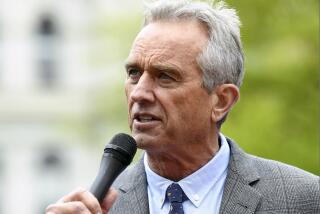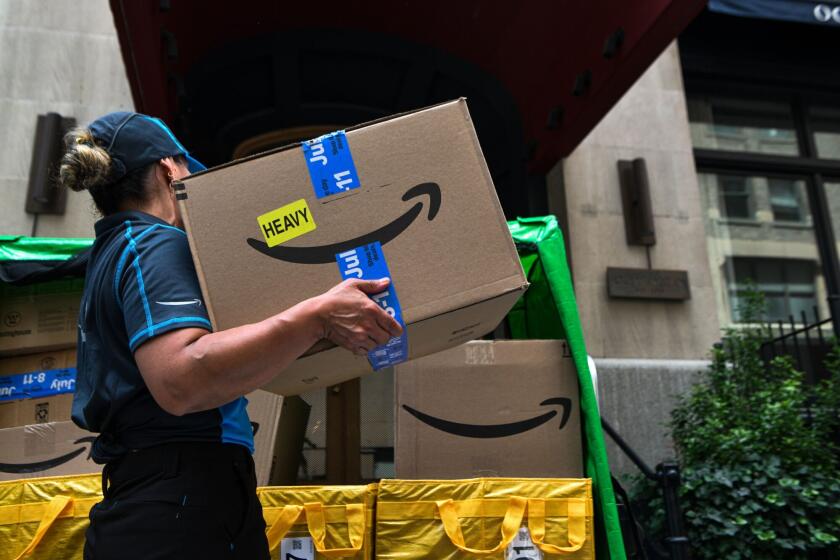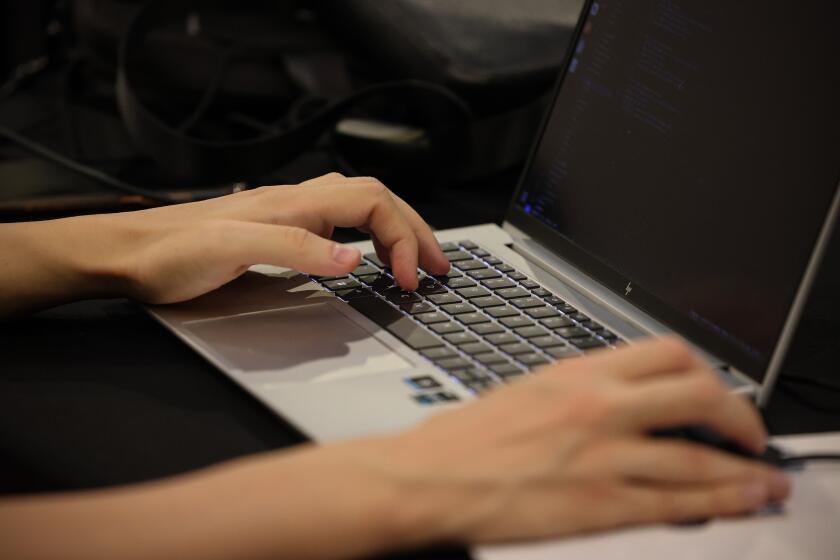Amid Dread, Medical, Business Opportunities
- Share via
For most people thinking about war and terrorism, any mention of the word “cell” conjures up thoughts of enemy agents in our midst. For Dr. Robert Chow, however, the word brings to mind something altogether different: a chance to give hope to the gravely ill.
Chow is chairman of StemCyte Inc., an Arcadia start-up firm that specializes in using cord blood stem cells -- the kind taken from the umbilical cords of newborns -- to help treat cancer patients. A chunk of the company’s market springs straight from Desert Storm and homeland defense, reflecting not only the dread of our time but also its medical advances and business opportunities.
In Kuwait, for instance, Chow is trying to determine if StemCyte can set up a bank of regenerative stem blood cells. The reason: Kuwait has suffered a markedly high incidence of leukemia since the 1991 Gulf War.
Why Kuwait is plagued with this problem is a matter of some controversy. Leading Kuwaitis point to the toxic fumes from the oil fields set ablaze by Saddam Hussein’s retreating soldiers, and chemicals and gases released by Iraq during the war. Baghdad, for its part, blames depleted-uranium shell casings from armor-piercing weapons that U.S. forces unleashed as they prosecuted Desert Storm.
Chow doesn’t much care who’s right.
“I don’t know about the causes,” he says. What he does know is this: “We can help the children with leukemia.”
Chow visited Kuwait in November in an effort to generate some business. He hasn’t returned there, however, because the threat of war has made the notion of building a blood transplant center in the Middle East impractical for the moment.
Back home, Chow and StemCyte’s 68 employees also have been thinking about national security issues. Their aim is to win a federal grant to develop a bank of stem cells in Washington, which would treat radiation sickness should terrorists hit the U.S. capital with a nuclear “dirty bomb.”
StemCyte has little choice but to try to secure some major contracts as swiftly as it can -- whether the market is defense-related or not. So far, the 3-year-old firm has just about used up all of its $20 million in venture capital.
It does, however, have a small revenue stream: more than $200,000 last year from consulting and the beginning of sales to major hospitals, such as the City of Hope cancer center. The company will break even this year, Chow says, and he is hopeful it can soon turn a profit. If all goes according to plan, StemCyte may prepare to go public in 2004.
The 41-year-old Chow didn’t expect terror as a spur to business when he set up his company in 1999. A native of Taiwan, he graduated from Harvard Medical School in 1997 and was working at UCLA Medical Center in transfusion medicine when the idea for the company came to him.
At the time, the medical world was beginning to accept the concept of using newborn stem cells instead of adult bone marrow cells as a way to regenerate the immune system in those stricken with cancer.
“It is easier to achieve a transplant of cells that the body won’t reject if cord blood rather than bone marrow is used,” explains Dr. Stephen Forman, director of hematology and bone marrow transplantation at City of Hope’s cancer center in Duarte. The reason: The immune system contained in a newborn’s cells is relatively unformed and can adapt fairly easily when placed in a patient.
Using newborn stem cells also is comparatively cheap. Hospitals pay $15,000 to institutions such as the New York Blood Center or to companies such as StemCyte for blood therapies. But the cost of bone marrow cells is double that because of the procedures needed to extract marrow from donors and transplant it in recipients.
Chow drew venture capital from two firms that specialize in backing entrepreneurs in the U.S. and greater China: Sycamore Ventures and WI Harper Group Inc. Dr. Jonas Wang , a Sycamore partner and a retired research official with Johnson & Johnson Inc., became chief executive of StemCyte.
It’s no accident that Chow chose the Los Angeles area to build a bank of 18,000 newborn stem cells. (His other cell bank is in Taiwan.)
“Cell matches,” Chow says, “are easier within groups -- Asians to Asians, African Americans to African Americans -- and so on,” and Southern California offers an incredible richness of ethnic diversity.
Meanwhile, Chow and his chief medical officer, Dr. Lawrence Petz, say they have overcome one of the drawbacks of culling cells from newborns: small volumes that make it difficult to treat full-size adults. “We can combine doses to achieve larger volumes,” says Petz, who was Chow’s mentor at UCLA.
Looking ahead, Chow sees robust growth for stem-cell therapy. He believes it will one day be used to treat as many as 100 different ailments, including heart disease. After a heart attack, “muscle stem cells can regenerate a ventricle muscle,” says Chow, whose father was a noted cardiologist in Taiwan.
For now, though, much of his focus will continue to reflect our troubled world.
Chow, who speaks a little Arabic from the days he lived in Libya, where his dad served as chief physician for leader Moammar Kadafi, believes that Iraq would face many of the same medical problems that have confronted Kuwait since the last war. Already, physicians in Basra -- near the Kuwaiti border -- have reported high rates of leukemia.
And that could mean a role for StemCyte and its cell banks. “Medicine,” he rightly points out, “has no borders.”
*
James Flanigan can be reached at jim.flanigan@
latimes.com.
More to Read
Inside the business of entertainment
The Wide Shot brings you news, analysis and insights on everything from streaming wars to production — and what it all means for the future.
You may occasionally receive promotional content from the Los Angeles Times.










